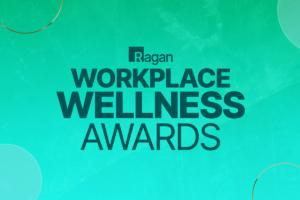The overlooked component of holistic wellness programs: social well-being
Why employers should be prioritizing it.

Humans are social creatures. In our early, formative years, children are, hopefully, nurtured within healthy family environments: loving parents, siblings, extended family, friends, teachers, coaches and others. But as children mature into adults, interactions with others change and evolve. As adults, many feel like their life is separated into silos — even more so over the past two years when social distancing and quarantining became the norm.
Messages like this promote an ideology of individualism. Our ability to positively connect ourselves to family, community or co-workers has been severely disrupted, and our collective social well-being gets hit hard.
What happens to people when they are disconnected from these relationships? A 2012 National Academy of Science Social Isolation Study showed that individuals without social interaction are at an increased risk for cardiovascular disease, infectious illness and lower mortality rates, to name just a few negative health impacts. Other research has linked strong social interactions with positive health benefits: motor skill retention, cancer survival, general immune function, memory function preservation and overall longevity.
Unfortunately, social wellness is typically an overlooked aspect of an employer’s wellness program. It intuitively makes sense that if an employee “feels” connected to the workplace, they will be a productive member of the team. But, employers may not take that connection further. They may operate with the sense that an employee’s social wellness is an aspect of life that falls outside of the workplace, and therefore, they overlook this component of holistic well-being.
As with the other three components of holistic well-being — financial, emotional and physical wellness — social wellness should be equally reinforced with employers, because what happens outside of the workplace has a direct effect at the workplace. For starters, research proves social health is directly linked to physical health, which can impact an employer’s bottom line through rising medical claims, absenteeism, “presenteeism” or workplace accidents.
For a balanced social wellness component, employers should be aware of the positive outcomes healthy employee relationships, both in and out of the workplace, bring to the organization. How can an employer add a social wellness component to their holistic wellness program? Many already have pieces of a program in place, yet are unaware of the attributes they can bring. For example:
- Anniversaries and birthdays: Celebrating milestones, such as company anniversaries and employee birthdays, are some basic ways of bringing employees together.
- Staff Meetings: How often is the company holding employee or department meetings? Connecting your workforce to the mission and vision of the company and frequent communication of achievements as well as challenges leads to engagement at all levels. This creates a culture that promotes employees working together pro-actively and creatively.
- Teamwork: Can employees ask for and lend a hand to one another? Allowing employees to have an inter-dependency lays the groundwork for fostering a social community within the organization.
- Promoting diversity: Does the business promote and educate employees regarding diversity? Having a culture that promotes and accepts diversity is critical to advancing a social culture within any company.
- Giving back: Does your organization support nonprofits based in the community? Doing so provides numerous benefits, including: employees are encouraged to involve their family, the community as a whole benefits and the employer’s reputation is enhanced. With today’s millennial generation, they are reshaping organizations philanthropic connection to their community. This can be a powerful employee attraction and retention tool.
Before moving forward on implementing these programs, it is important to recognize the return on the investment (ROI) may be most difficult to compute within the social wellness component. But, the risk of foregoing a social wellness component can be detrimental. As an individual’s relationships become disconnected, an employer may see more emotional signs, such as isolation and grief, become transparent, and employees are typically referred into Employee Assistance Programs (EAPs) or need further counseling. It is only when the social disconnection starts to take a toll on employee’s health that employers will see increasing medical expenses and productivity issues impacting the bottom line.
Yet when an employer’s culture includes proactively promoting a variety of opportunities for social engagement, not only does the employee have a work environment that is conducive to creativity and developing relationships with co-workers, engagement in the community and additional opportunities for work-life balance, the employer’s reputation also positively grows. With this, employers should realize a multitude of benefits — specifically, a reduction in turnover, a positive impact on recruiting costs and overall improvement in productivity.
Bobbi Kloss is the Director of Human Capital Management Services for the Benefit Advisors Network – an exclusive, national network of independent employee benefit brokerage and consulting companies. She can be contacted at bkloss@benefitadvisorsnetwork.com or visit: www.benefitadvisorsnetwork.com.
COMMENT
Ragan.com Daily Headlines
RECOMMENDED READING
Tags: Benefit Advisors Network, Bobbi Kloss, employee engagement, ROI, social wellness






